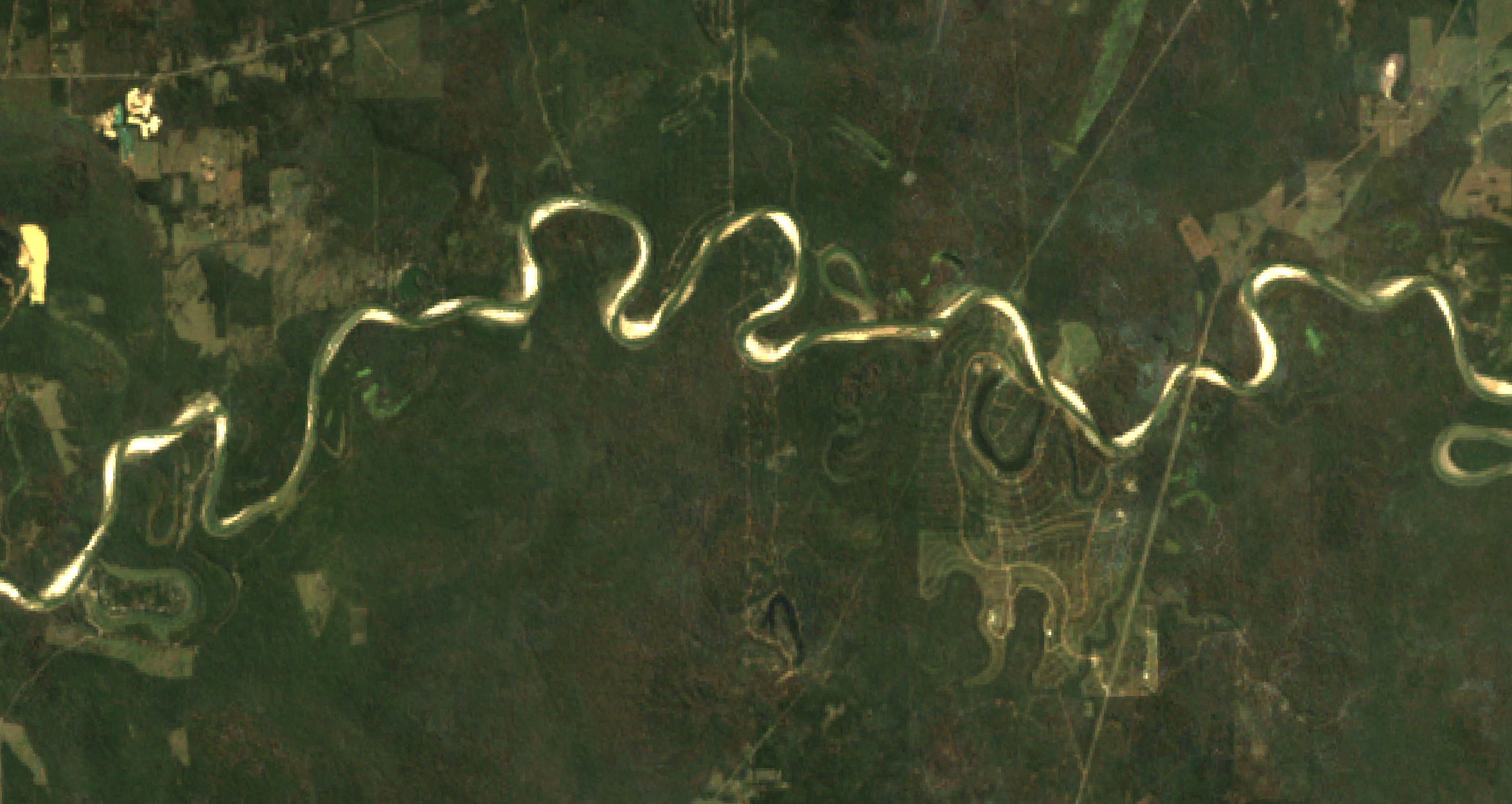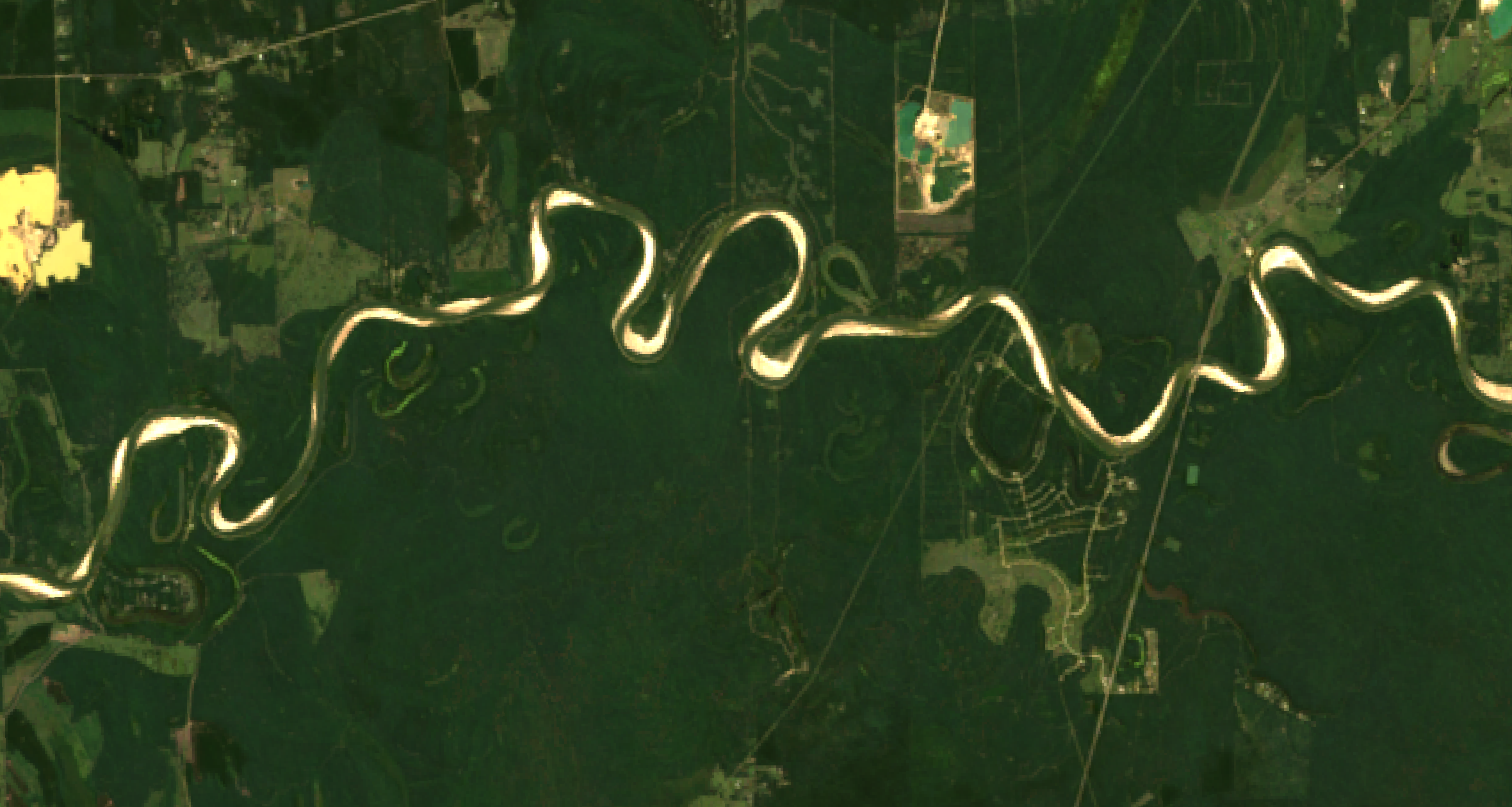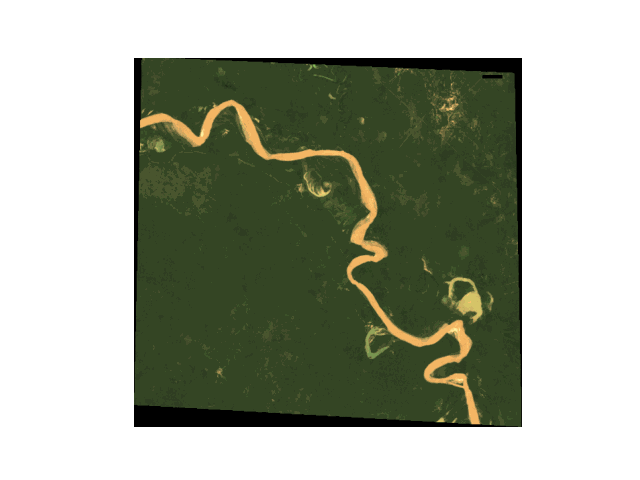The paths of meandering rivers, which curve back and forth across landscapes the world over, can shift by dozens of meters per year. This affects both the livelihoods of millions of people living in floodplains and—because river ecosystems both absorb carbon and carry it from land to sea—the terrestrial carbon cycle.
“The migrations of these meandering rivers are the clocks that access that carbon or dictate the timescales at which a lot of that carbon is removed,” said Evan Greenberg, a doctoral student in geography at the University of California, Santa Barbara studying fluvial geomorphology.
Erosion along the outer edge of a river’s curve, which can be mitigated by vegetation, and sediment deposition on the inner edge of a curve are two major factors that control how fast a river migrates. Meandering rivers began developing hundreds of millions of years ago, around the same time that plants with roots did.
In part because of this correlation, the leading paradigm has long been that vegetation is the most important variable in determining river migration rates.
But a new study by Greenberg and his adviser, Vamsi Ganti, published in Earth and Planetary Science Letters, found that the amount of sediment a river carries plays a prominent role in river migration rates. Whereas previous studies have found this to be true in specific regions, such as the Amazon, Greenberg and Vamsi examined 139 rivers of various sizes, climates, regions, and vegetation levels.
“Our goal was to really try and bring all of these ideas under the similar umbrella, because the vegetation hypothesis work ignored sediment flux, and the sediment flux work that was done at regional scale before ignored vegetation,” said Ganti, a geomorphologist also at the University of California, Santa Barbara.


That Dam Sediment
Ganti and Greenberg combined publicly available data on river migration, primarily from rivers in the Americas, with commercial satellite data for 60 smaller rivers in locations such as Central Asia and Papua New Guinea.
It’s true, they found, that vegetated rivers, which are better shielded against erosion, tend to migrate more slowly than unvegetated rivers—but only about 4 times as slowly, not 10 times as slowly, as was reported in a 2020 Nature Geoscience study.
“That kind of gives us this natural experiment of sediment being trapped in the reservoir, reducing the sediment supply to the downstream portion of the dam compared to the upstream portion.”
Further, vegetated meandering rivers tend to be larger and carry less sediment than their unvegetated counterparts. This means the rivers’ slower migration rates could be attributed not to their vegetation but to their size or sediment loads. To untangle these effects, the researchers isolated the role of sediment supply by considering three dammed U.S. rivers.
“That kind of gives us this natural experiment of sediment being trapped in the reservoir, reducing the sediment supply to the downstream portion of the dam compared to the upstream portion” while vegetation levels remained the same in both portions, Ganti said.
In all three cases—the Red River and the Denison Dam, which straddles Oklahoma and Texas; the Iowa River and the Coralville Dam, in Iowa; and the Flint River and the Crisp County Power Dam, in Georgia—the researchers found that these rivers migrate more slowly downstream of dams, where there is less sediment in the water. This left them with a clear conclusion about sediment’s key role in driving river migration.

A Matter of Methodology
Alessandro Ielpi, a geomorphologist at the University of British Columbia Okanagan Campus and first author of the Nature Geoscience paper suggesting that unvegetated rivers migrate 10 times as fast as unvegetated rivers, said the difference between the two groups’ findings is a matter of methodology: His group had calculated the movement of rivers using the apex of river curves, or the part that migrated the most, whereas the new study averaged migration rates for rivers based on their centerlines.
The global nature of this new study makes it “more important, from a statistical significance point of view,” than previous regionally focused research.
“What we should have stated, really, was ‘as much as 10 times,’” Ielpi said, adding that he and his colleagues have since replicated Ganti and Greenberg’s findings about differences in migration rates. He also said the global nature of this new study makes it “more important, from a statistical significance point of view,” than previous regionally focused research.
The researchers plan to expand their work by creating a global database of large sediment-laden river dams, as well as measuring the migration levels of all types of rivers, not just meandering ones.
After all, river migration can affect more than the terrestrial carbon cycle and riverside human communities. Rivers’ responses to raised temperatures are recorded in the layers of sediments that pile up on their banks, Ganti said. Using these archives to learn how rivers migrated during the Paleocene-Eocene Thermal Maximum, a period of global warming about 55 million years ago, could help scientists understand how rivers might respond to modern climate change.
—Emily Dieckman (@emfurd), Associate Editor

